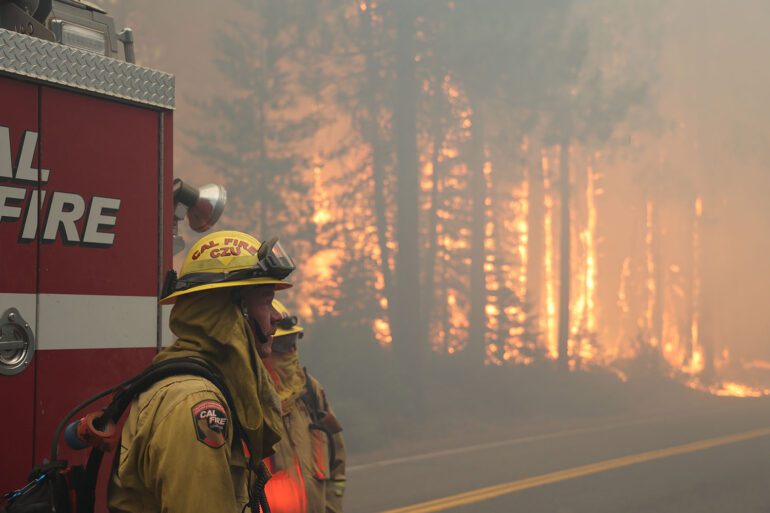TL;DR:
- Cal Fire integrates artificial intelligence (AI) into wildfire management.
- AI-powered cameras detect smoke and anomalies in real-time, providing early wildfire identification.
- Computers equipped with AI algorithms generate immediate predictions on fire movement using topography and wind speed data.
- Drones capable of dropping pellets for controlled backfires improve targeted fire suppression in hazardous areas.
- Captain Africa expresses awe and appreciation for the groundbreaking AI technology.
Main AI News:
Cal Fire, the California Department of Forestry and Fire Protection, has embraced a groundbreaking advancement in the battle against wildfires. Harnessing the power of artificial intelligence (AI), they have successfully integrated this cutting-edge technology into their firefighting arsenal. By utilizing state-of-the-art cameras capable of detecting smoke, Cal Fire’s Emergency Command Center in Grass Valley has taken a significant leap forward in early wildfire identification.
Captain Chris Africa, stationed at the command center, explains how these AI-powered cameras have revolutionized their operations. “These auto-generated cameras, guided by AI indicators, provide us with real-time alerts,” Africa reveals. Dispatch monitors now display a distinct red box whenever smoke is detected by the wildfire cameras. Africa aptly refers to these AI wildfire alerts as “signatures,” providing invaluable information that allows for swift and targeted responses.
The true genius of this AI integration lies in its ability to identify not only smoke but also anomalies within the camera system. Africa explains, “The cameras are capable of detecting anything that is either smoke or deviates from the normal camera parameters.” This unprecedented level of automation and accuracy streamlines the identification process, eliminating the need for human intervention and minimizing response time.
In addition to early detection, computers equipped with AI algorithms are aiding Cal Fire in predicting the trajectory of wildfires. By incorporating topography and wind speed data, this new technology generates immediate and accurate forecasts of fire movement. Cal Fire Battalion Chief David Krussow, stationed at the Grass Valley Air Attack Base, emphasizes the transformative impact of these predictive models. “Having precise information about the fire’s current location and direction is an invaluable asset,” Krussow states. “It truly is a game changer in wildfire management.”
Cal Fire’s commitment to embracing cutting-edge technology extends beyond AI integration. Last year, they introduced drones capable of dropping pellets used to set controlled backfires in hazardous areas, where sending firefighting crews would be too risky. This innovative approach allows for targeted fire suppression and containment, enhancing firefighter safety while ensuring more effective wildfire management.
When questioned about the role of AI in firefighting, Captain Africa expresses his awe and appreciation for the rapid advancements. “This is truly a groundbreaking development,” Africa reflects. “The technology was unimaginable not long ago, but now we are fully embracing it. It’s both fascinating and crucial in our mission to combat wildfires.“
Conclusion:
The integration of artificial intelligence into Cal Fire’s wildfire management practices marks a significant advancement in the market. The use of AI-powered cameras for early detection and real-time alerts enhances efficiency and minimizes response time. The incorporation of AI algorithms for fire movement prediction provides precise information, enabling more effective firefighting strategies. Additionally, the utilization of drones for controlled backfires in dangerous areas showcases Cal Fire’s commitment to innovative and targeted fire suppression techniques. This adoption of AI technology positions Cal Fire as a leader in the market, setting a precedent for other firefighting agencies to leverage advanced technologies for improved wildfire management and enhanced public safety.

